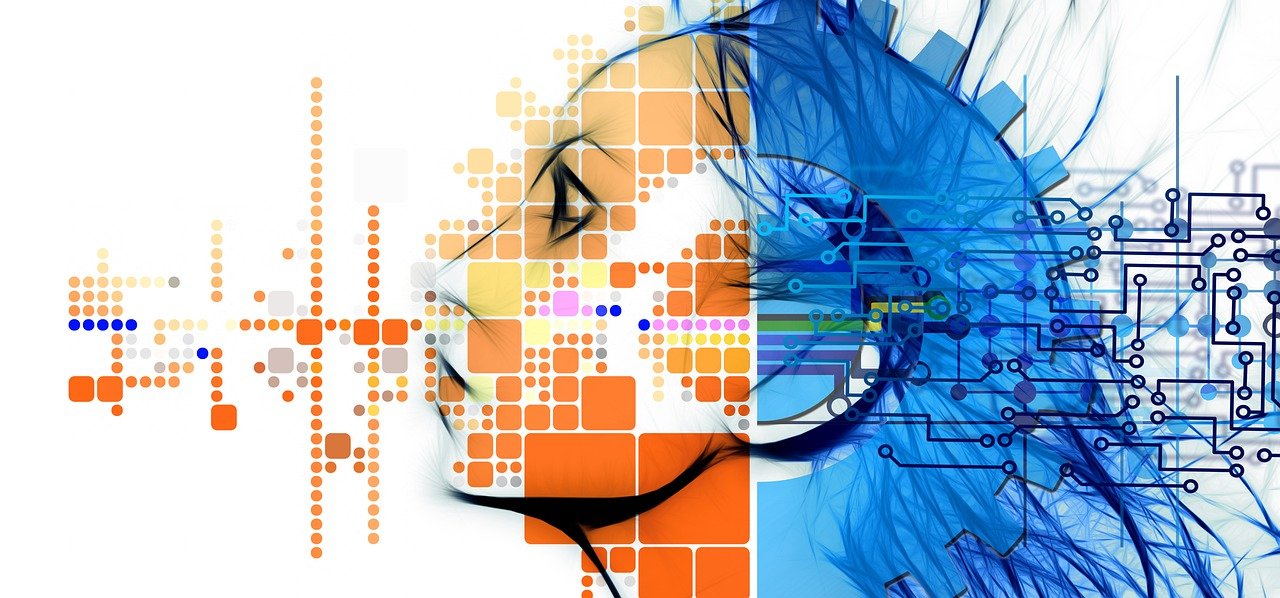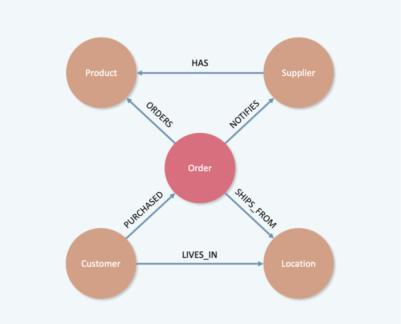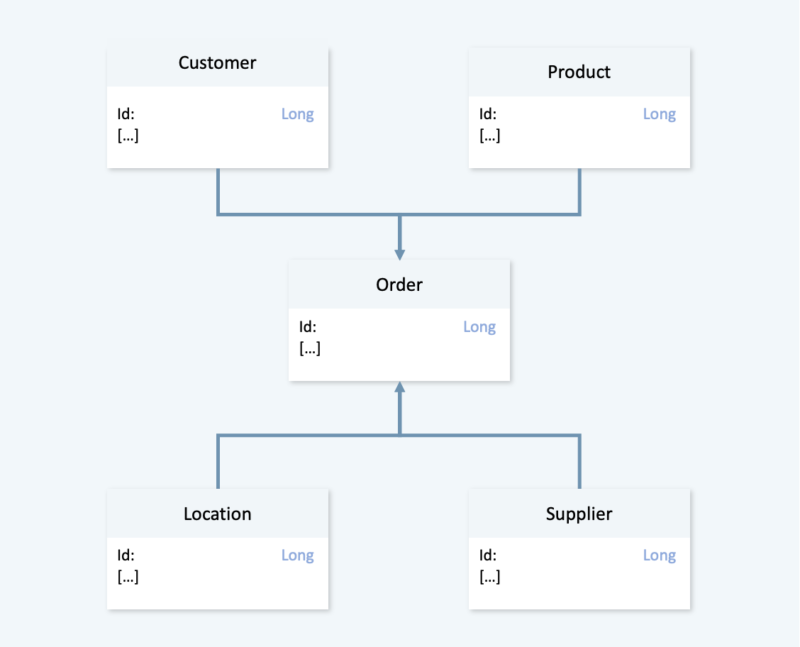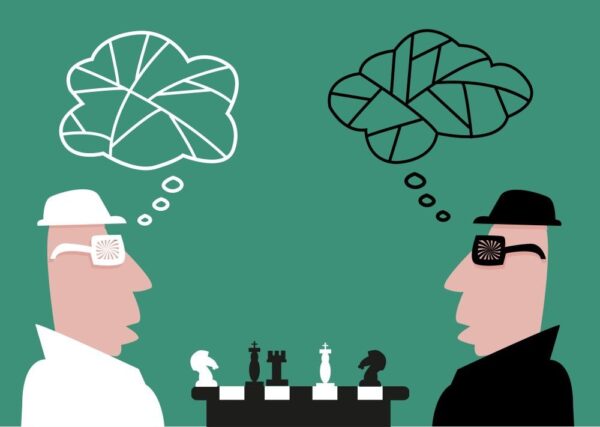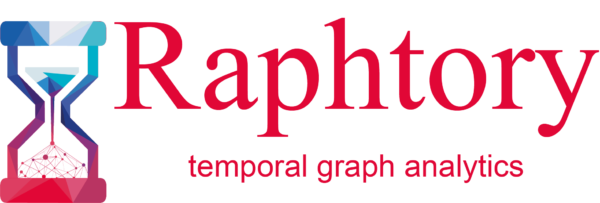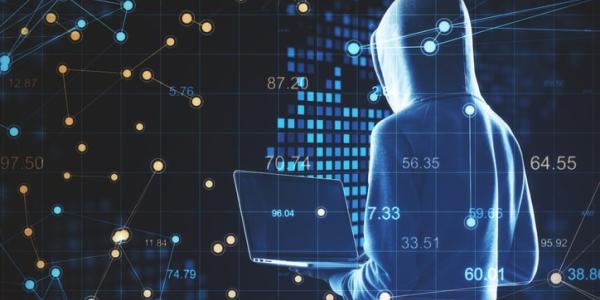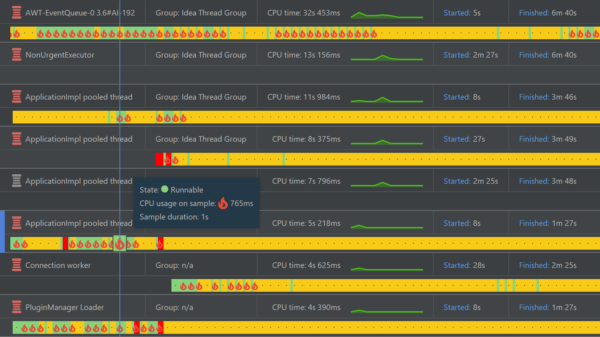A graph models information as a set of nodes that can be connected by edges. For instance, in a transactional setting, nodes would represent real-world entities and edges a monetary relationship between them denoting a transaction.
Nodes can therefore be thought of as the individual rows in a database whereas the edges as the connections through foreign keys. Attributes in the data like Customer name, Order number, and so more will be directly encoded onto the node structure itself.
In the example above we show how to apply this understanding to model a supply chain. We note that a Customer will often PURCHASE an Order. This Order will then SHIP_FROM a certain Location. The same or different Location which the customer may live in.
Furthermore, if we ever wish to add additional columns to the data, we can simply choose to store this information as a new attribute. Something which is normally hard to do in relational models.
